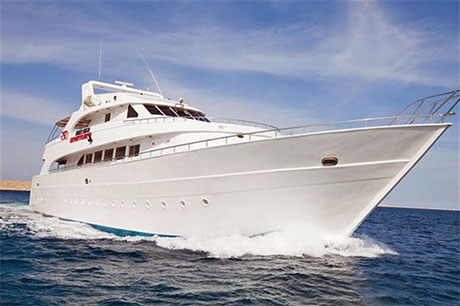Book Review: Oceans

Oceans
Paul Rose and Anne Laking
BBC Books, 2008
240pp. £20
1-846075-05-X
Oceans is the book of the BBC series of television programmes that aimed to reveal the hidden stories of the sea. It was presented by four divers: underwater archaeologist Lucy Blue, oceanographer Tooni Mahto, environmentalist Philippe Cousteau and explorer Paul Rose.
I was pleased to be asked to review this book as Lucy Blue and I learnt to dive together many years ago, although we have long since lost touch. I already had a special interest in the series therefore and was very jealous of her travelling the world diving whilst I sat in my office merely writing about it.
The book starts with cave diving in the Mediterranean. It progresses to an interesting section on stromatolites. These are bacterial cities that were around in the oceans 2.5 billion years ago. They expire oxygen and are responsible for our atmosphere today. Amazingly there are still two places in the world where stomatolites still exist. One of these is in the Bahamas where the team dived.
But the divers then went even further back in time to 3.5 billion years. There is one place where you can still experience an ancient ocean: on the island of Andros, south of Grand Bahama. The Black Hole is a sinkhole that plunges 47 metres into limestone. Isolated from the rest of the ocean it is a unique marine environment hosting bacterial life. It is acidic and toxic, but the team dived it; measuring temperature and oxygen levels as they did so.
This was a dive I didn't envy. Clear water gives way to a very hot sulphurous layer which in turn heralds blood red then black depths. The divers were all ill after the dive and one person's hair even changed colour.
The diving improves with the Sea of Cortez chapter. This small stretch of sea by Baja California contains one third of the earth's marine mammal species. Five of the seven species of turtle migrate here. More species of whales and dolphins feed and breed in the Sea of Cortez than in any other part of the world. It used to also be known for its schooling Hammerhead sharks. Now, though, these once abundant animals are disappearing as a result of shark-finning and over-fishing.
So what has replaced the sharks as top-level predators? Packs of two-metre-long Humboldt squid. A few decades ago there were none of these squid in the Sea of Cortez. Now there are over 10 million.
The rest of the book is taken up with the Indian Ocean, the Red Sea, the Southern Ocean and the Artic Ocean. It covers how the oceans came to be and why they host so much life, the history of the coasts, shipwrecks, underwater villages, threats to the oceans, the effects of climate change, pollution, fishing…tying everything together.
This is a very interesting book, more so than some of the television series. I would buy it just for the Sea of Cortez chapter. As you would expect from a BBC publication, the photos are first class. It is at once a celebration of under-the-sea and a warning about the massive affects we have on the marine environment and its inhabitants.
About the Authors
Paul Rose is a polar guide, professional diver and yacht skipper. He was the base commander of the British Antartic Survey and was awarded both the Queen's Polar Medal and the US Polar Medal. He ran the US Navy's diver training programme at the Great Lakes Naval Training Center. Anne Laking is a producer of factual and science programmes which have won a number of awards.
More on the Oceans series.

